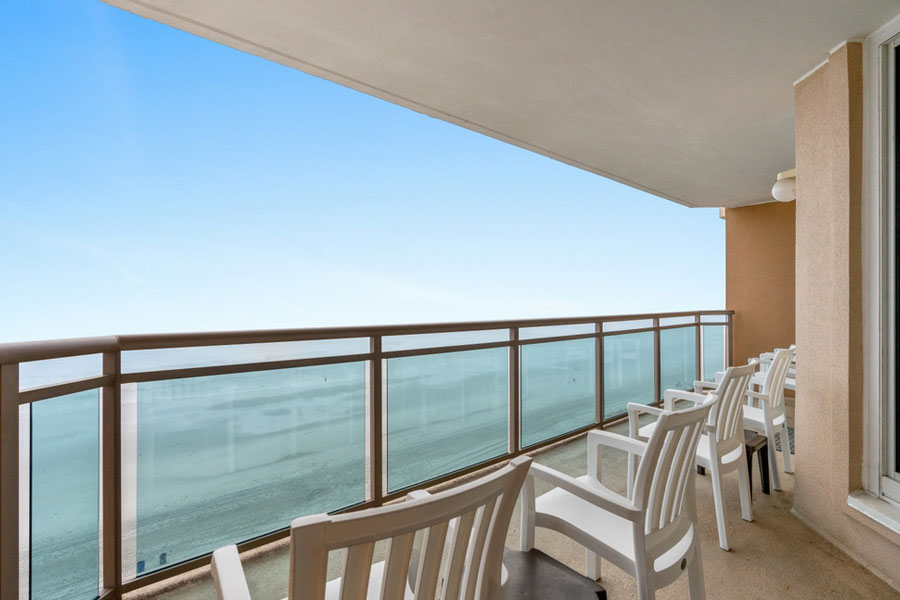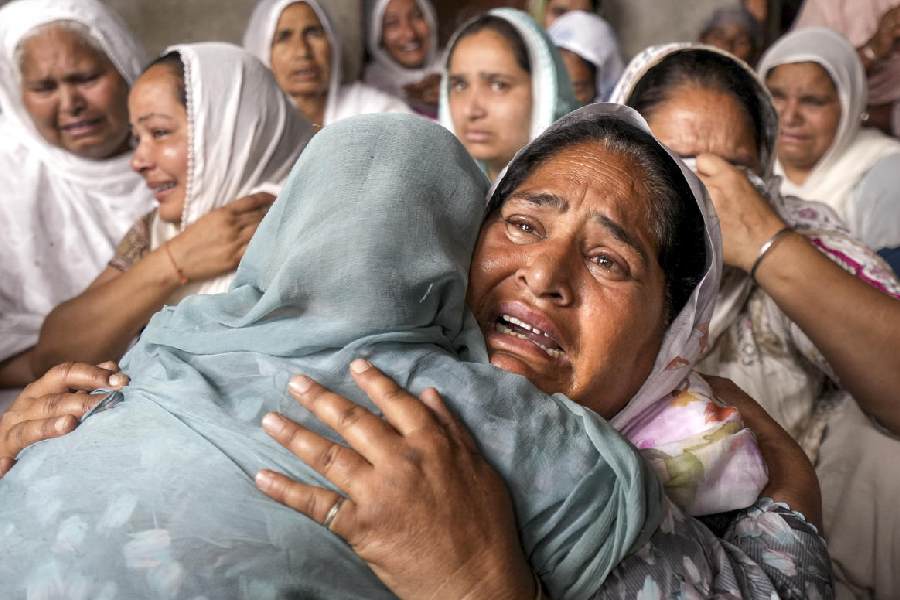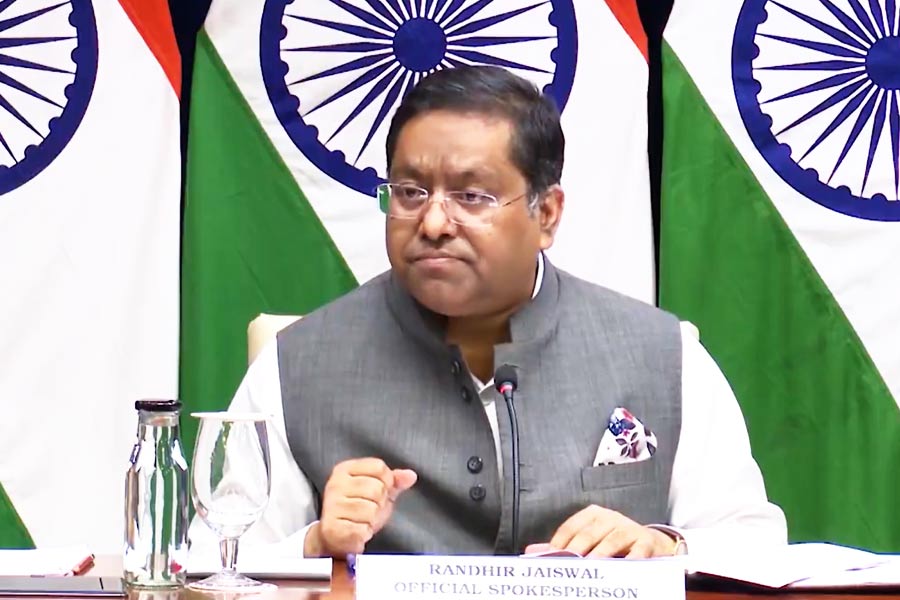 |
| The suspension footbridge that is being constructed by the villagers. Picture by Saidul Khan |
Tura, May 4: Fifteen villages along the northern bank of the longest river in the Garo hills, Simsang, in Meghalaya’s East Garo Hills, will soon reap the benefits of the Mahatma Gandhi National Rural Employment Guarantee Scheme (MGNREGS).
Five villages have come together to construct a suspension footbridge to put an end to their woes. The villages are Chachatgre, Bolkingre, Ashabibra, Ganinggre and Ganingbibra.
The bridge is 85 per cent complete and is likely to be opened by the end of this month. It will connect Kusimkolgre locality of Williamnagar on the southern bank to Chachatgre and other adjoining villages. Altogether 382 two households have contributed money for the construction of the bridge.
The length of the bridge is 17.6 metres and breadth is 1.2 metres. It is said to be the longest suspension footbridge in the Garo hills, constructed at a cost of above Rs 1.05 crore.
In the absence of a bridge connecting villages on the southern side in Williamnagar, under Samanda development block, people had faced hardship for ages. One-third of the population of Samanda block inhabits the southern side of the river. The area is sandwiched between Durama hills and Simsang river.
The villages on the northern bank depend on Williamnagar for their different needs — be it business, education or health services. The main bottleneck is the river, which flows above danger level during the monsoon.
Underlining the very fact, the state government initiated construction of a concrete bridge, which has remained incomplete for 30 years.
Officials in the district administration said the bridge, which is almost 80 per cent complete, would be inaugurated by the end of this year. The bridge at Warima locality in Williamnagar will connect at least 55 villages on the other side of the river.
The bridge had collapsed several times, dampening the spirit of the people. This has forced villagers on the northern side to decide on their own to construct a suspension footbridge across Simsang under the central scheme.
“The river allows crossing by vehicle for only four months in a year and during the rest of the year the only way to cross the river is by traditional boats called ring,” said Vijay Mantri, deputy commissioner of East Garo Hills.
“Every day hundreds of vegetable vendors, students, teachers, patients and others cross the river. A bridge has been eluding them for the past many years,” said Mantri. “The construction of a footbridge is the villagers’ brainchild; however, we have given them the technical assistance.”
The footbridge will not allow any four-wheeler to pass but it will ease their problems during monsoon. Two-wheelers can easily ply on the footbridge.
In September 2012, five village employment councils under Samanda block decided to construct the footbridge and approached the district administration. The councils were set up in Garo hills for the implementation of the NREGS as the panchayat does not exist in Meghalaya.
Samanda block development officer Rejina Marak said, “The five councils adopted a resolution and took up the work. They have sacrificed their wages for the construction, as skilled labourers were hired. The villagers did unskilled work for the bridge.”
Marak said, “Meghalaya Integrated Basin Development and Livelihood Promotion Program supported the project by way of providing critical gap funding and also getting the project technically vetted. It has contributed about Rs 19.43 lakh.”
Recollecting a boat tragedy in 2012, Mantri said, “A young girl, Juna Momin, lost her life while crossing the river on a boat. It reminds us of the sordid picture and the problems that the villagers have been facing over the years.”










